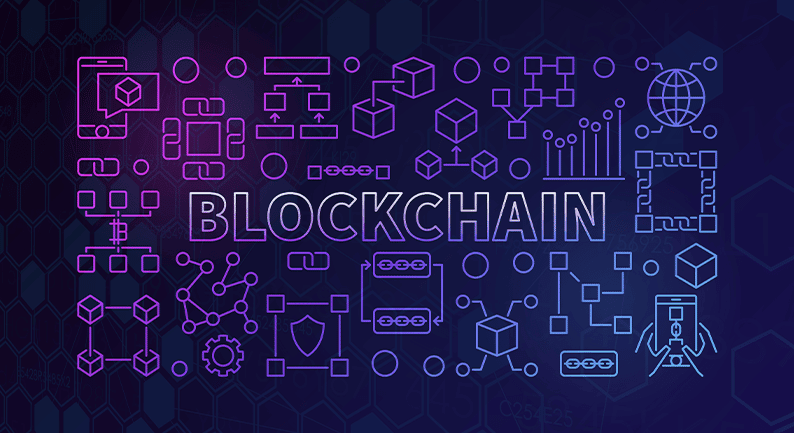When developing your initial blockchain, initializing Substrate begins with the configuration of your development environment.
After this, developers can establish a small network of validators by altering the runtime code for a node and then scaling the network up progressively.
When Ethereum was released in July 2015, the world was introduced to smart contracts, which aimed to transform the blockchain realm and allowed anybody, from developers to enthusiasts, to construct decentralized apps (DApps) on the Ethereum mainnet.
Various DApps are currently in use across multiple blockchains, such as Ethereum. They offer a wide range of use cases, including banking, gaming, finance, online retail, and social networking, to an ever-growing global user base.
Ethereum has restrictions such as restricted scalability and expensive gas prices, which prevent developers from creating specialized solutions that can compete with major centralized platforms like Twitter, Facebook, and Netflix.
To overcome these obstacles and explore the potential of blockchain technology, Gavin Wood, co-founder of Ethereum and its first chief technical officer, left the Ethereum Basis and formed Parity Technologies to develop blockchain infrastructure that can serve as Web3’s foundation.
Armed with extensive industry knowledge and a profound understanding of blockchain development, he created Substrate, an open-source and future-proof blockchain framework for developers to build on, allowing them to adapt the architecture of their blockchain to changing customer preferences.
Substrate-based blockchains can be connected as parachains on networks such as Polkadot or Kusama and enable a high level of interoperability, introducing faster, cheaper, and safer decentralized real-world solutions.
How does the substrate blockchain function?
The idea of Web3 as a decentralized blockchain-based version of the internet is contingent upon the ability of developers to create blockchain applications that can connect with networks like Ethereum and Bitcoin.
Typically, blockchain developers design such apps using a blockchain framework. Utilizing in-built templates can save a significant amount of development time at the tradeoff of restricted modification flexibility.
This is where Substrate, an open-source blockchain framework for building customized blockchains, enables developers to rapidly build blockchains based on field-tested code that powers a global ecosystem of blockchain initiatives.
Substrate is the primary blockchain software development kit (SDK) used to build the Polkadot layer-0 protocol and may be used by developers to create any form of blockchain. It consists of a vast array of tools and libraries.
A decentralized network of these nodes or computers that communicate maintains the current ledger with the most recent transactions. Each node in a blockchain network functions as a client and a server, requesting and responding to data requests as necessary.
Unique to a Substrate node is the horizontal distribution of operating responsibilities that provides a modular framework for creating blockchains. Each Substrate node utilizes two primary components: an outer node that manages network activity and a runtime that validates transactions and manages changes to the blockchain’s state transition mechanism.
The outer node is accountable for connecting with other nodes, managing the transaction pool, peer discovery, and responding to remote procedure calls (RPC) or browser requests utilizing the RPC Application programming interface provided by Substrate (API). By asking or delivering information to the Substrate runtime, the outer node employs specialized runtime APIs to manage this communication.
Substrate runtime governs how transactions are contained in blocks, how blocks are returned to the outer node, and how the chain state is modified in reaction to transactions.
Using host functions to connect with the outer node, the Substrate runtime offers runtime validity checking and multi-platform compatibility, as well as validation proofs for relay chain consensus techniques and support for fork-less node architecture updates.
How does Substrate facilitate the development of a custom blockchain?
The Substrate provides more freedom, flexibility, and optimization options than developing on top of a general-purpose intelligent contract network like Ethereum. In addition, blockchains based on Substrate can exist as “solo chains” or integrate with Polkadot or Kusama to become parachains.
Developers may opt to begin with a Substrate node template, which is the fundamental unit for constructing a blockchain using Substrate and provides a great deal of pre-built functionality with default implementations for account management, consensus, privileged access, and peer-to-peer (P2P) networking.
These Substrate node templates are maintained at the Substrate Developer Hub, and developers can access Substrate’s vast, active, and helpful building community, actively enhancing the ecosystem.
Substrate’s Framework for Runtime Aggregation of Modularized Entities (FRAME) comes into play for more sophisticated projects where developers require greater freedom to decide their blockchain logic.
FRAME is one of the most potent tools offered by Substrate and consists of various modules and support libraries designed to facilitate runtime development. These modules, also known as Substrate pallets, represent customizable business logic for use cases like staking, governance, and consensus, as well as other crucial tasks that developers may wish to integrate at runtime.
In addition, its system, support, and executive pallets allow developers to provide an extensive array of services for the runtime environment. While it is possible to construct a Substrate-based blockchain without using FRAME, the various pallets and libraries enable developers to combine new runtime logic by utilizing its preset components as a starting point.
By mixing pre-built and custom pallets to control the features and functionality of the Substrate blockchain endlessly, developers may achieve specific solutions with a high degree of flexibility and simplicity.
How do you build your first blockchain using Substrate?
The Substrate provides tutorials that offer hands-on experience and the Substrate Playground for individuals who wish to experiment without much assistance, regardless of whether the developer is a novice or has prior expertise with a blockchain framework.
Tutorials for Substrate are suited for absolute novices, as they cover all processes without delving too deeply into code specifics. In addition to these lessons, Substrate provides a variety of how-to guides on specific topics and access to many open source projects created with Substrate.
However, it is crucial to learn how to work with pallets on Substrate to adapt the logic of each node so that it may be used in conjunction with smart contracts to include even more functionality into the resulting blockchain.
Thus, Substrate provides all the essential support from installation to the proper operation of your blockchain. While it lacks a native crypto-token, the Polkadot (DOT) token is the most popular due to its interoperability with other park chains in the Substrate and Polkadot ecosystem, demonstrating its emphasis on interoperability and scalability.
At Seattle Software Developers we know what a critical role Blockchains play in keeping a secure and decentralized record of transactions. Contact us today to discuss your next blockchain project.





